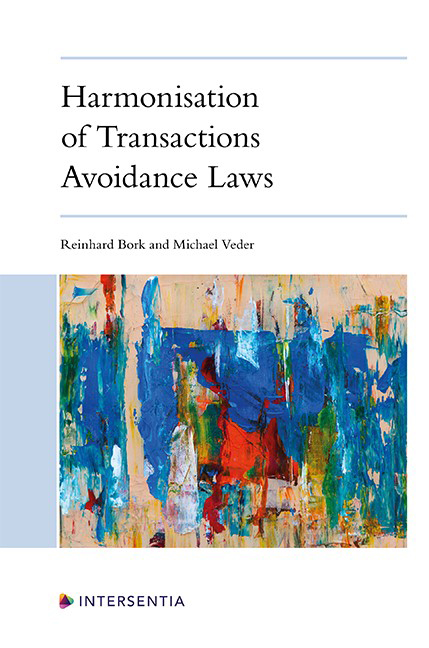Denmark
Published online by Cambridge University Press: 26 May 2022
Summary
A. INSOLVENCY LAW OF DENMARK
Transactions avoidance law is a part of Danish insolvency law and in general is governed by “Konkursloven” – the Danish Bankruptcy Act (DBA) chapter 8. The regulations on transaction avoidance have been regulated by Danish insolvency law since the introduction of the very first “Bankruptcy Law” in 1872. The provisions on transaction avoidance were amended significantly in 1977. Notably, during the legislative work there were careful deliberations and consultations between the Nordic countries and, as mentioned in the travaux préparatoires, it was of great importance to have significant similarities in the Nordic countries’ legislation in this field.
Only a few transactions are governed in legislation outside the DBA, e.g. repayment of disproportionate payments or premiums to certain assurances (Danish Insurance Contract Act, §§117 and 118) and repayment of variable remunerations that have been awarded to a manager of a company after the time the company became insolvent (Danish Company Act, §138 (2).
B. SCOPE
The Danish law governing transaction avoidance is applicable to all types of debtors and in both insolvency proceedings available in Denmark (restructuring and bankruptcy) and therefore is not dependent on whether or not the debtor is in possession. The Model Law’s recommendation on both the personal scope and the substantive scope in Recommendation D will therefore not require any amendments to existing legislation.
C. GENERAL PREREQUISITES
According to the Model Law §1: “Legal acts – including forbearance – which have been perfected prior to the opening of the proceedings to the detriment of the general body of creditors are voidable, provided the prerequisites of an avoidance ground are met.”
Danish transactions avoidance law does not – unlike the Model Law – include a formulated article on the general prerequisites for transactions which governs all transactions avoidance grounds. However, as will be shown in the following, Danish law does have very similar general prerequisites incorporated in the transaction avoidance system. As with the Model Law, Danish law operates with a very broad understanding of “transaction” or “legal act”, hence transactions performed by other than the debtor will in general be included in the overarching concept.
- Type
- Chapter
- Information
- Harmonisation of Transactions Avoidance Laws , pp. 337 - 344Publisher: IntersentiaPrint publication year: 2022



